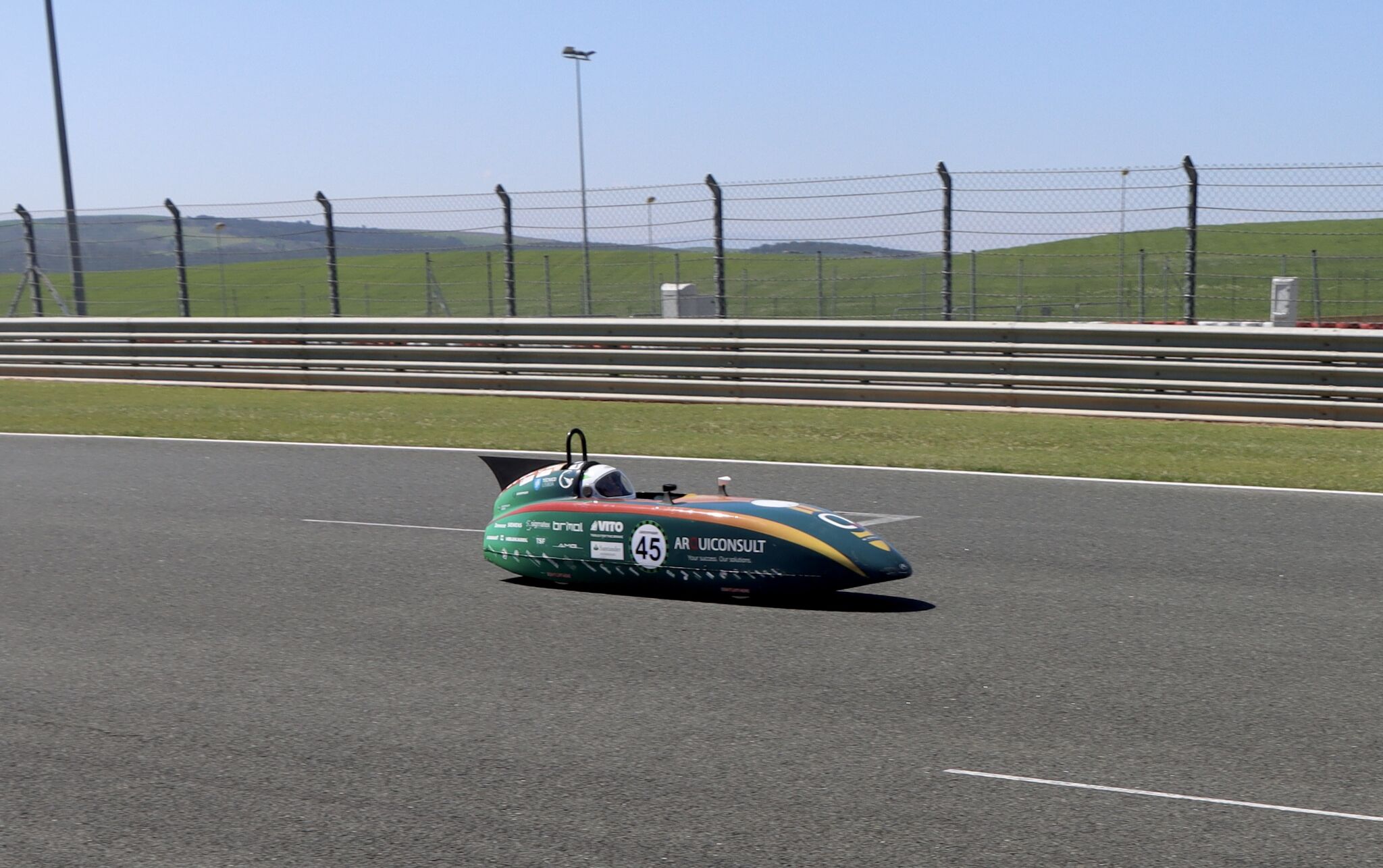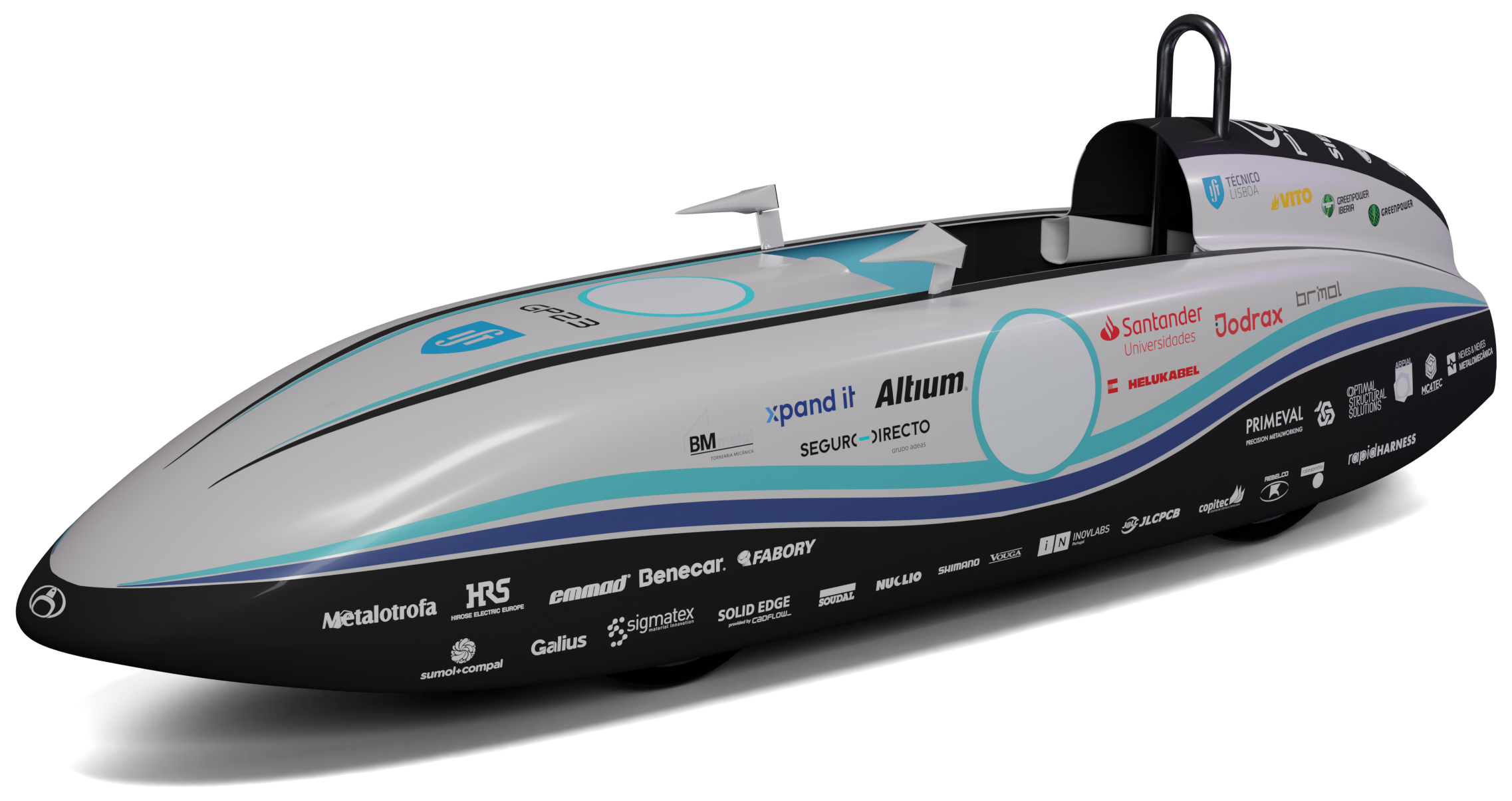PSEM: Building a More Sustainable Electric Car

The Mobile Energy Sustainability Project (PSEM) builds an electric car each year, striving to make it as sustainable as possible. The student group was founded in 2013, aiming to involve Técnico students in the Greenpower competition — a race where the goal is to complete as many laps as possible within one hour on a defined track. Currently, the project includes students from various courses, including Electrical and Computer Engineering.
In an interview with DEEC, Miguel Brito and Filipe Serafim, members of the electronics and software department, shared a bit about the history of the project, as well as its connection to electrical engineering.
Miguel Brito, a Master’s student in Electrical and Computer Engineering (MEEC), explains that he chose the program due to his interest in physics areas such as electromagnetism. He is currently specializing in energy. He joined PSEM through other members of the team and, in a few words, summarizes the team spirit that defines the group:
PSEM is a small family that keeps growing.
Miguel Brito, MEEC student and director of the electronics and software department at PSEM
Filipe Serafim, a Bachelor's student in the same field, highlights that he felt this environment during a visit to the workshop, which motivated him to join the team:"What attracted me to PSEM wasn’t just the idea of building cars, but the team itself, especially the members who organized the open workshop day. (…) I knew this would help me integrate." He has been interested in electronic systems from a young age, which led him to choose the Bachelor's in Electrical and Computer Engineering (LEEC). Combined with his passion for the automotive industry, this made the electronics department within the group a natural fit.
Over the past few years, PSEM has developed a total of five electric prototypes — GP14, GP17, GP19, GP21, and GP23 — which are on display at the Alameda and Taguspark campuses. Currently, GP25 is under development, and the team is expected to participate in this year’s competition, in the category for students aged 16 to 24. Last year, the GP23 won 1st place in races at Aintree and Dunsfold, and 2nd place at Lotus Hethel.

GP23 The Champion
But what’s the secret behind these strong results? Miguel emphasizes that during the design and construction phases, several parameters must be optimized — including aerodynamics and electronics: "It’s about playing with cable resistivity and power circuit losses, combining that with data we collect from the circuit — for example, GPS, speed, and temperature readings."
We learn how to build a system from start to finish, how a power circuit works, and what steps are needed to apply it in real life.
Miguel Brito, MEEC student and director of the electronics and software department at PSEM
The power circuit is the part of the electrical system that supplies the motor. It is mainly composed of two batteries connected in series, conductive cables, and a charge controller that manages energy distribution, regulates voltage, and prevents overcharging. Energy management is also essential for vehicle startup — aiming for a gradual acceleration rather than using maximum power at the beginning of the race.
Since the prototype uses a single gear ratio and has no gearbox, the students estimate the best target speed and power to optimize performance over the 1-hour duration. The current prototype can reach speeds of 60–70 km/h.
Throughout development, various tests are conducted to assess the efficiency of different electronic components.
We also research the efficiency of each component in the car. (…) We need to know exactly how the connections run from the steering wheel’s PCB to the main PCB, and then to the motor, the data loader, and the GPS.
Miguel Brito, MEEC student and director of the electronics and software department at PSEM
The connection between software, programming, and electronics is a central part of the project. Miguel and Filipe stress that participating in PSEM helps solidify the theoretical knowledge acquired in both the Bachelor’s and Master’s courses by putting it into practice — a valuable contribution to their professional development. They cite PCB (Printed Circuit Board) assembly and soldering as examples — a key task that connects system components and is widely used in mobile phones, medical equipment, and robots, making it essential in the electronics industry.
In conclusion, Filipe Serafim points out that being part of the team gives students insight into the work of different departments, exposing them to areas beyond their core focus. He also emphasizes the development of soft skills, especially communication and collaboration, fostered by the group’s outreach efforts at events such as ElectroDay or the Electrical and Computer Engineering Days.
I feel the team has a strong emphasis on teamwork: no one is alone, and you can always ask for help.
Filipe Serafim, LEEC student and member of the electronics department at PSEM
Photos: PSEM
